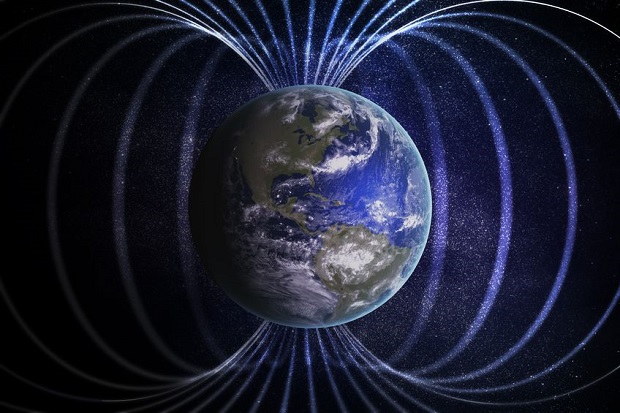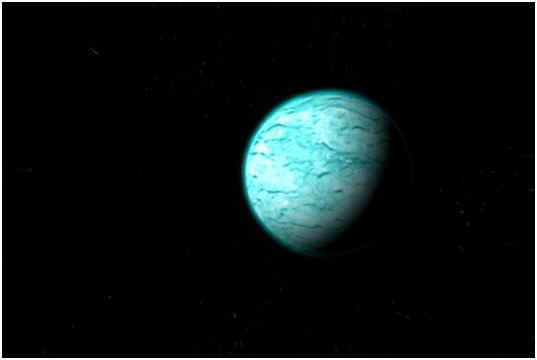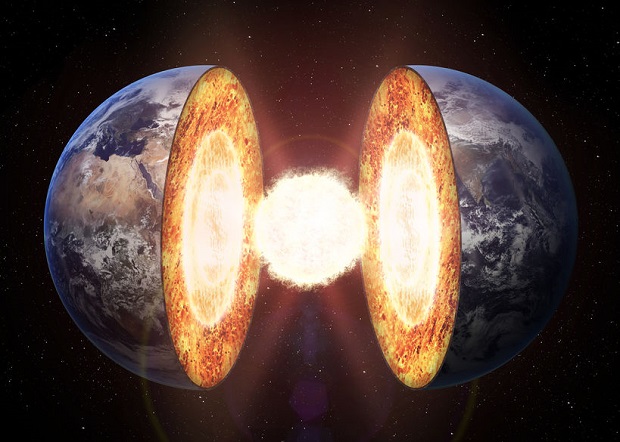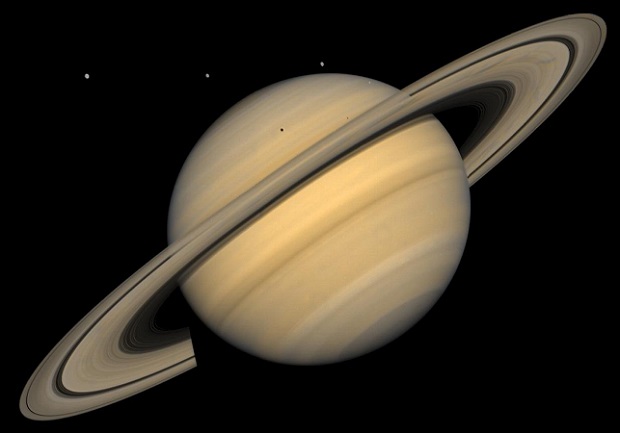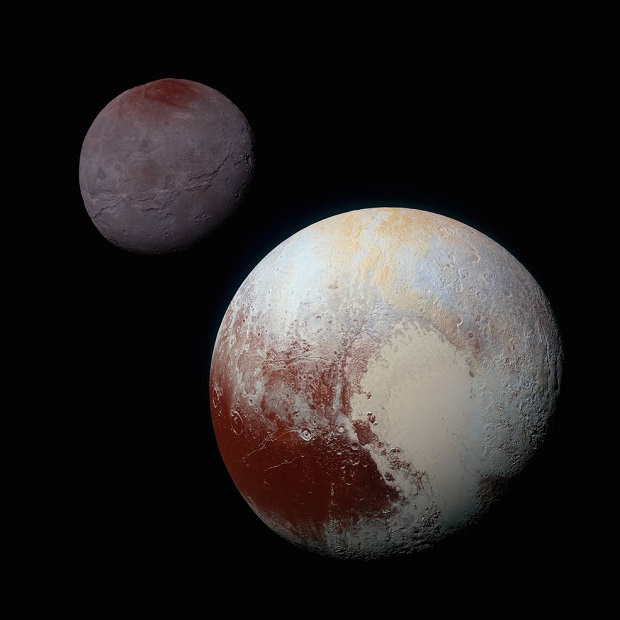
Credits: NASA/JHUAPL/SwRI
Does Pluto Have Moons?
Pluto has five moons – Charon, Nix, Hydra, Kerberos, and Styx.
Pluto’s Largest Moon, Charon
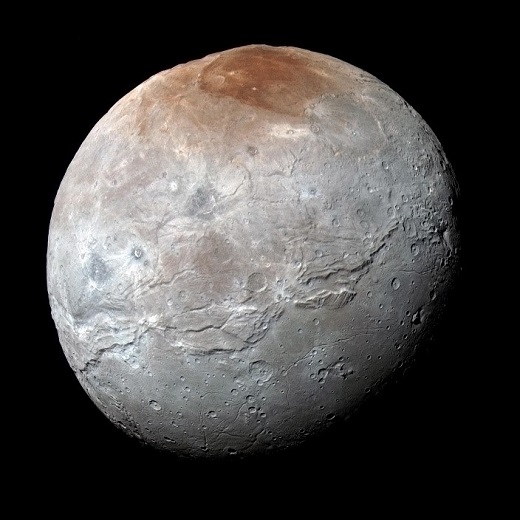
Credits: NASA/JHUAPL/SwRI
Pluto’s largest moon, Charon, is nearly half Pluto’s size and is one of the largest moons in the solar system relative to the planet it orbits.
Charon was the first of Pluto’s moons to be discovered. In 1978, astronomer James Christy noticed Pluto’s images were strangely elongated and confirmed through additional images that he had discovered Pluto’s first moon.
Charon’s orbit around Pluto takes about 6.4 earth days and is 12,200 miles from Pluto.
Pluto’s Moons Nix and Hydra
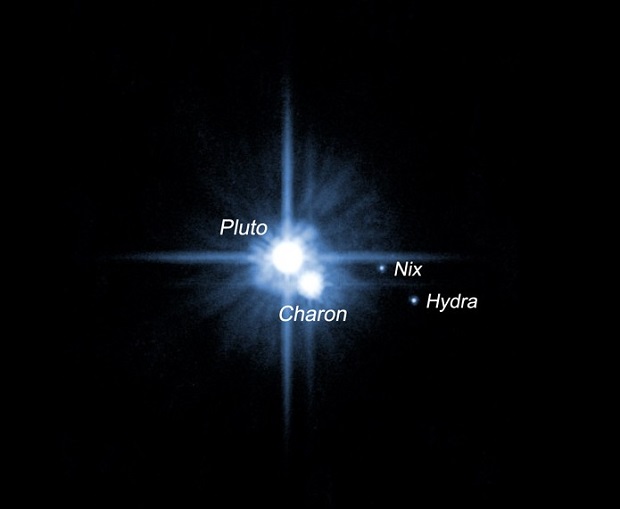
A Hubble Telescope team discovered Pluto’s second and third moons, Nix and Hydra, in 2005. They are roughly 5,000 times fainter than Pluto and are about two to three times farther from Pluto than Charon. They are roughly 20 to 70 miles in diameter, compared to Charon’s 648 miles in diameter.
Pluto’s Newly Discovered Moons Kerberos and Styx
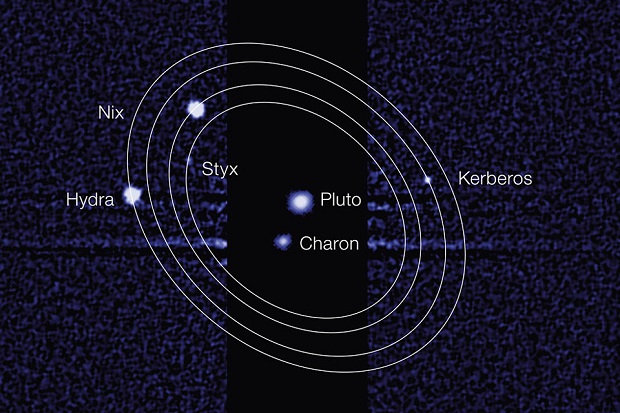
Pluto’s fourth moon, temporarily designated P4, was discovered in 2011. Its fifth moon, temporarily designated P5, was discovered in 2012. In 2013, the International Astronomical Union gave the two moons the permanent names Kerberos and Styx.
Scientists discovered Styx while searching for potential hazards to the New Horizons spacecraft’s voyage prior to its Pluto flyby in 2015.
Both Kerberos and Styx are shaped irregularly and are an estimated 6-7 miles in diameter.
A Small Planet with Many Moons
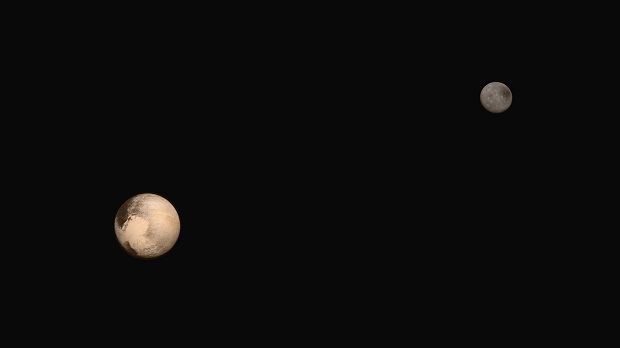
Credits: NASA/JHUAPL/SwRI
The discovery of Pluto’s fourth and fifth moons has intrigued scientists and helped formulate new theories about how the Pluto system formed and evolved. The current popular theory concludes the moons remain after a collision between Pluto and another large Kuiper belt object billions of years ago.
Resources
- NASA – Solar System Exploration – Pluto: In-Depth – Moons
- NASA – The 40th Anniversary Celebration of the Discovery of Pluto’s Moon Charon
- NASA – Pluto Lithograph
- NASA – Pluto and Its Moons
- NASA – Pluto’s Moons In-Depth
- NASA – New Horizon’s – Last of Pluto’s Moons – Mysterious Kerberos – Revealed by New Horizons
- NASA – Solar System Exploration – Pluto: Moons: Kerberos
